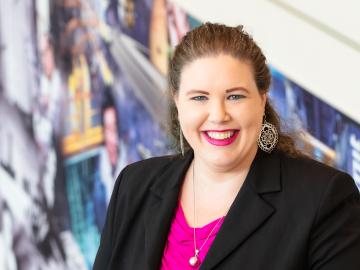
Filter News
Area of Research
- Biology and Environment (34)
- Clean Energy (32)
- Computational Engineering (1)
- Computer Science (1)
- Electricity and Smart Grid (1)
- Fuel Cycle Science and Technology (1)
- Fusion and Fission (14)
- Fusion Energy (3)
- Isotopes (11)
- Materials (48)
- Materials Characterization (2)
- Materials Under Extremes (1)
- National Security (18)
- Neutron Science (18)
- Nuclear Science and Technology (2)
- Supercomputing (48)
News Type
News Topics
- 3-D Printing/Advanced Manufacturing (9)
- Advanced Reactors (2)
- Artificial Intelligence (15)
- Big Data (6)
- Bioenergy (10)
- Biology (16)
- Biomedical (4)
- Biotechnology (1)
- Buildings (7)
- Chemical Sciences (12)
- Clean Water (5)
- Climate Change (18)
- Composites (4)
- Computer Science (11)
- Coronavirus (1)
- Critical Materials (1)
- Cybersecurity (6)
- Decarbonization (17)
- Emergency (1)
- Energy Storage (8)
- Environment (31)
- Exascale Computing (12)
- Fossil Energy (2)
- Frontier (14)
- Fusion (8)
- Grid (10)
- High-Performance Computing (22)
- Hydropower (2)
- Irradiation (1)
- Isotopes (9)
- Machine Learning (10)
- Materials (37)
- Materials Science (10)
- Mathematics (2)
- Mercury (1)
- Microelectronics (2)
- Microscopy (5)
- Nanotechnology (4)
- National Security (15)
- Net Zero (3)
- Neutron Science (20)
- Nuclear Energy (17)
- Partnerships (8)
- Physics (11)
- Polymers (3)
- Quantum Computing (6)
- Quantum Science (3)
- Renewable Energy (1)
- Security (2)
- Simulation (21)
- Software (1)
- Space Exploration (4)
- Summit (7)
- Sustainable Energy (9)
- Transportation (5)
Media Contacts

The old photos show her casually writing data in a logbook with stacks of lead bricks nearby, or sealing a vacuum chamber with a wrench. ORNL researcher Frances Pleasonton was instrumental in some of the earliest explorations of the properties of the neutron as the X-10 Site was finding its postwar footing as a research lab.

Scientists have long sought to better understand the “local structure” of materials, meaning the arrangement and activities of the neighboring particles around each atom. In crystals, which are used in electronics and many other applications, most of the atoms form highly ordered lattice patterns that repeat. But not all atoms conform to the pattern.

ORNL is teaming with the National Energy Technology Laboratory to jointly explore a range of technology innovations for carbon management and strategies for economic development and sustainable energy transitions in the Appalachian region.

Stephen Dahunsi’s desire to see more countries safely deploy nuclear energy is personal. Growing up in Nigeria, he routinely witnessed prolonged electricity blackouts as a result of unreliable energy supplies. It’s a problem he hopes future generations won’t have to experience.

Benjamin Manard has been named to the editorial board of Applied Spectroscopy Practica, serving as an associate editor.

The Center for Bioenergy Innovation has been renewed by the Department of Energy as one of four bioenergy research centers across the nation to advance robust, economical production of plant-based fuels and chemicals.

Scientists at ORNL have confirmed that bacteria-killing viruses called bacteriophages deploy a sneaky tactic when targeting their hosts: They use a standard genetic code when invading bacteria, then switch to an alternate code at later stages of
The Autonomous Systems group at ORNL is in high demand as it incorporates remote sensing into projects needing a bird’s-eye perspective.

Anne Campbell has been selected as a topical editor for a special issue of the journal Frontiers in Nuclear Engineering, titled “Women in Nuclear Engineering Research.”

A team of researchers from ORNL has created a prototype system for detecting and geolocating damaged utility poles in the aftermath of natural disasters such as hurricanes.


